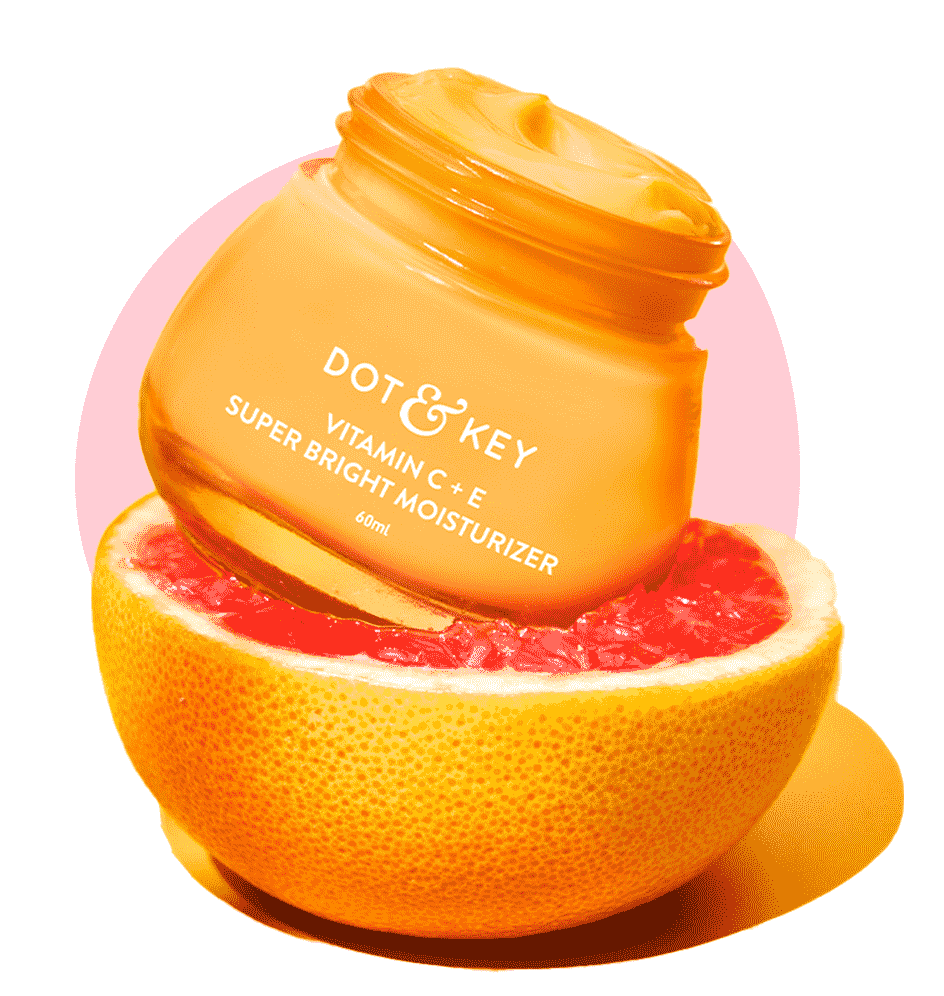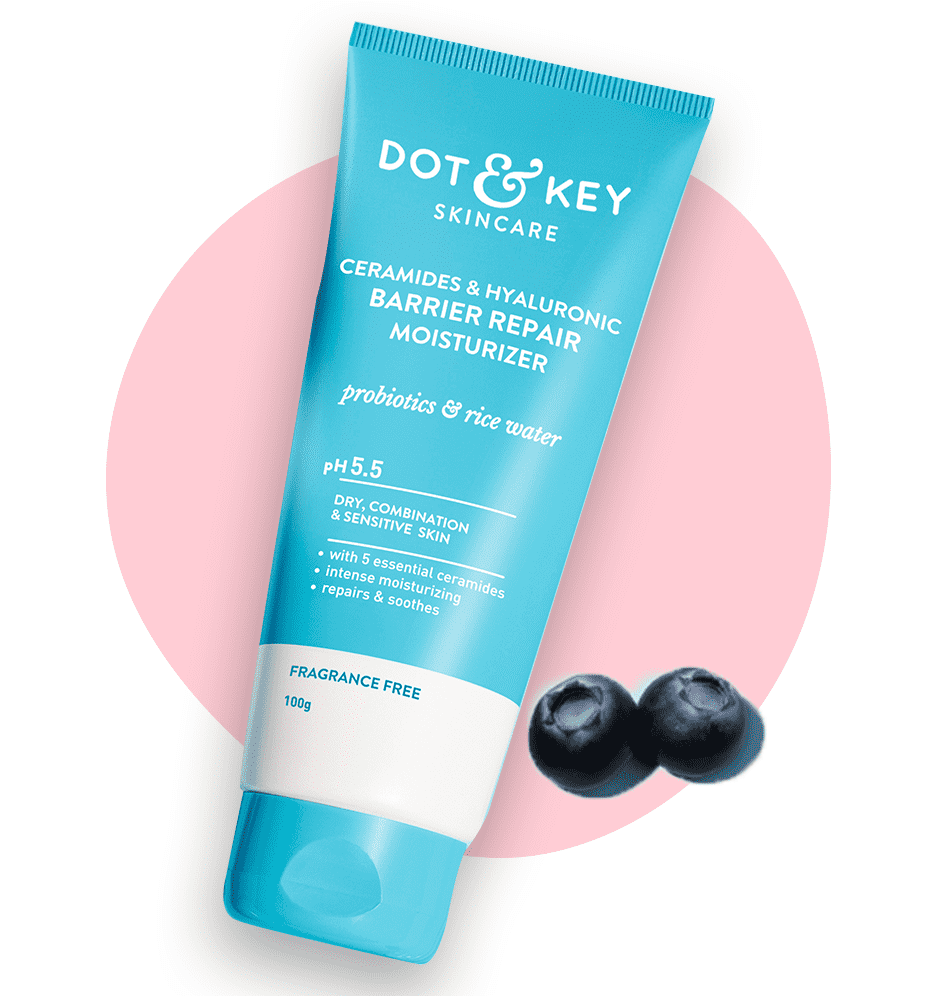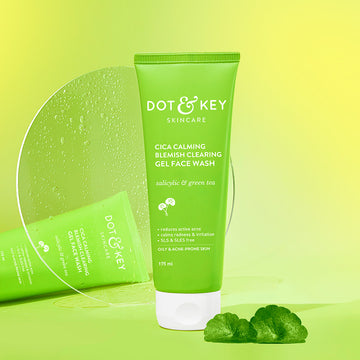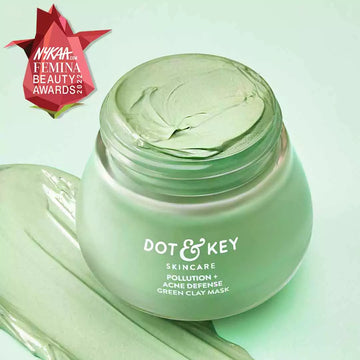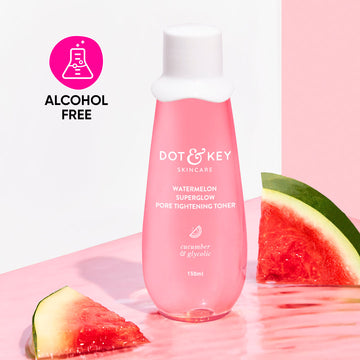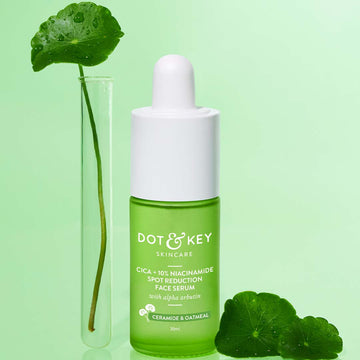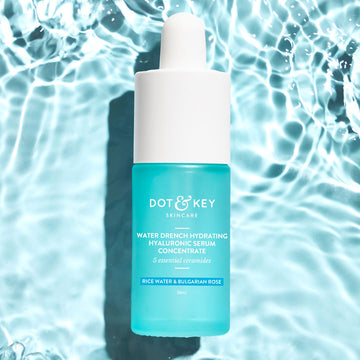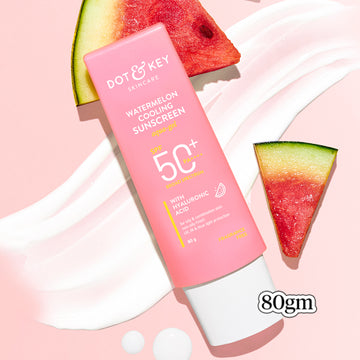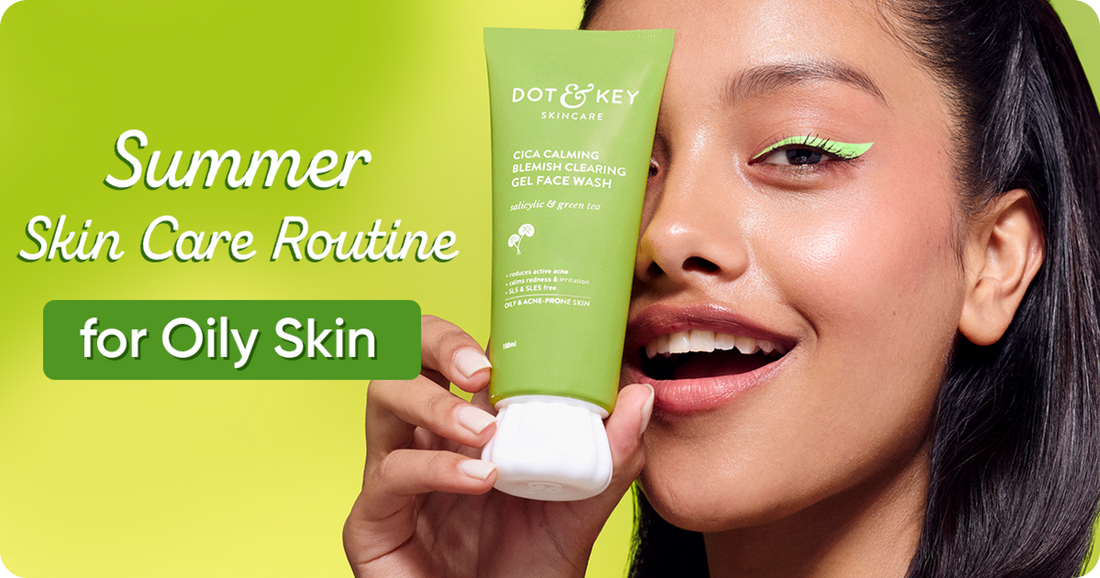
Beat the Summer with bright skin without the shine!
If you have oily skin, summer can feel like a constant battle against shine, breakouts, and clogged pores. The heat and humidity turn your skin into an oil factory, making it tricky to keep that fresh, matte look. But don’t worry—we’ve got your back! With the right skincare routine, you can control excess oil, prevent breakouts, and keep your skin glowing (in a good way!).
In this blog, we’ll break down what causes oily skin and walk you through a summer skincare routine that keeps your skin balanced, clear, and happy all season long. Let’s get started!
What Causes Oily Skin?
Ever feel like your skin is in overdrive, producing more oil than you need? You’re not alone! Oily skin happens when your sebaceous glands go a little too enthusiastic with sebum production. While this natural oil is essential for keeping your skin moisturized, too much of it can lead to clogged pores, breakouts, and that all-day shine.
But why does your skin do this? Here’s what’s causing the grease fest:
Key Causes of Oily Skin:
- Genetics: Oily skin tends to run in families. If your parents have oily skin, there’s a higher chance that you’ll have it as well. Research published in the Journal of Clinical and Aesthetic Dermatology shows that genetics play a significant role in determining sebum production, which influences skin type.
- Hormonal Changes: Hormones, particularly androgens, stimulate the production of sebum. During puberty, menstruation, pregnancy, and even stress, these hormone levels can increase, leading to more oil production. A study in Dermatologic Clinics found that fluctuations in androgens are closely linked to oily skin and acne.
- Environmental Factors: Hot, humid weather, especially in summer, can trigger excess oil production. The heat causes the sebaceous glands to work overtime, producing more oil in an attempt to keep the skin hydrated. This often results in oily, shiny skin throughout the day.
- Improper Skin Care: Using harsh skincare products that strip your skin of its natural oils can backfire. When your skin becomes too dry, it compensates by producing even more oil, making the problem worse. Additionally, over-exfoliating can irritate the skin, leading to increased sebum production.
- Diet: Certain foods, particularly those high in refined sugars or unhealthy fats, can contribute to excess oil production. Research suggests that a diet high in processed foods may lead to increased sebum production, while a balanced diet rich in fruits and vegetables can help control oil levels.
Step-by-Step Summer Skin Care Routine for Oily Skin
Oily skin in summer? We’ve got you! The heat and humidity can send your sebaceous glands into overdrive, but with the right routine, you can keep excess shine, breakouts, and clogged pores at bay. Follow this simple yet effective skincare routine to stay fresh, balanced, and glowing all summer long!
Let’s dive in!
Step 1: Cleanser (AM & PM)
Cleansing is the most important step for managing oily skin. A good cleanser removes excess oil, dirt, and impurities that can clog pores and lead to breakouts. For oily skin, it’s essential to use a gentle, foaming cleanser with ingredients like salicylic acid or tea tree oil that help control oil production and clear out pores without over-drying the skin.
How to Do It
- In the morning, use a foaming cleanser with salicylic acid to remove the oil and sweat accumulated overnight. This helps unclog pores and reduce the risk of acne.
- At night, cleanse again to remove makeup, sunscreen, and dirt that has built up throughout the day. Focus on your T-zone, which tends to be the oiliest part of your face.
Pro Tip: Avoid harsh cleansers that strip away too much oil, as this can lead to increased sebum production. Stick to gentle, oil-control cleansers designed for daily use.
Step 2: Exfoliation (1-2 times a week at Night)
Exfoliation is key for oily skin, as it helps remove dead skin cells and prevents clogged pores. However, over-exfoliating can irritate the skin and lead to more oil production. Use a chemical exfoliant with beta-hydroxy acids (BHAs), like salicylic acid, which penetrate deep into the pores and control oil.
How to Do It
- After cleansing at night, apply a gentle exfoliant with salicylic acid 1-2 times a week. Focus on areas prone to blackheads and excess oil, like the T-zone.
- Avoid physical scrubs, which can irritate the skin and cause micro-tears, leading to increased oil production.
Pro Tip: Be mindful not to over-exfoliate, especially in the summer when your skin may already be sensitive to sun exposure.
Step 3: Toner (AM & PM)
Toners help balance your skin’s pH and remove any leftover impurities after cleansing. For oily skin, use an alcohol-free toner with ingredients like witch hazel or niacinamide. These ingredients help control oil production, minimize pores, and soothe the skin without drying it out.
How to Do It
- In the morning, apply toner to your T-zone to help control oil throughout the day.
- At night, use toner again after cleansing to remove any excess oil or dirt left behind and prep your skin for the next steps.
Pro Tip: Look for toners with astringent properties to help tighten pores and reduce shine in the T-zone.
Step 4: Serum (AM & PM)
Serums deliver concentrated active ingredients to target specific skin concerns. For oily skin, use a lightweight, non-comedogenic serum with niacinamide or hyaluronic acid. Niacinamide helps regulate oil production and minimize pores, while hyaluronic acid hydrates the skin without adding extra oil.
How to Do It
- In the morning, apply a lightweight serum with niacinamide to keep oil production under control throughout the day.
- At night, use a hydrating serum with hyaluronic acid to maintain moisture levels while preventing oiliness.
Pro Tip: Avoid oil-based serums that can clog pores and worsen breakouts.
Step 5: Moisturizer (AM & PM)
Even oily skin needs hydration. Skipping moisturizer can actually cause your skin to produce more oil to compensate for the lack of moisture. Use a lightweight, oil-free, non-comedogenic moisturizer that hydrates without clogging pores or adding shine.
How to Do It
- In the morning, apply an oil-free moisturizer after your serum to lock in hydration while keeping your skin matte.
- At night, use a gel-based or lightweight moisturizer to hydrate your skin while allowing it to breathe.
Pro Tip: Choose a moisturizer with mattifying properties to reduce shine throughout the day.
Step 6: Sunscreen (AM)
Sunscreen is a must, even for oily skin. UV rays can cause premature ageing, hyperpigmentation, and increase oil production. For oily skin, choose a lightweight, oil-free sunscreen with at least SPF 30. Look for sunscreens that are non-comedogenic and mattifying to avoid a greasy look.
How to Do It
- After moisturizing in the morning, apply sunscreen generously to your face and neck. Reapply every two hours if you’re spending time outdoors.
Pro Tip: Opt for a gel-based or mattifying sunscreen to control oil and shine throughout the day.
Step 7: Eye Cream (PM)
The delicate skin around the eyes is prone to dryness, even if the rest of your face is oily. Using an eye cream at night helps hydrate and protect this sensitive area, reducing the appearance of fine lines and puffiness.
How to Do It
- After applying your night moisturizer, gently pat a small amount of eye cream around your eyes using your ring finger. Look for eye creams with hydrating ingredients like hyaluronic acid or peptides.
Pro Tip: Use a cooling eye cream to reduce puffiness and soothe the under-eye area, especially during the hot summer months.
Step 8: Lip Care (AM & PM)
Don’t forget about your lips! The skin on your lips is even more delicate and prone to dryness, especially in summer. To keep your lips soft, hydrated, and smooth, incorporate a nourishing lip balm into both your morning and evening skincare routine.
How to Do It
- Night: Before bed, apply a thick layer of a hydrating lip balm to lock in moisture overnight. Look for lip balms that contain ingredients like shea butter or beeswax for deep hydration.
- Day: During the day, choose a lip balm with SPF to protect your lips from sun damage, which can lead to dryness and darkening.
Pro Tip: Keep a lip balm in your bag or on your desk to reapply throughout the day. Your lips need protection, especially when you’re out in the sun!
Summer Skincare Tips for Oily Skin
Say goodbye to greasy skin and midday shine! Follow these must-know tips to keep your skin fresh, matte, and breakout-free all summer long.
1. Use a Lightweight, Oil-Free Moisturizer
Don’t skip moisturizer! Opt for a gel-based or oil-free formula that hydrates without clogging pores. Keeping your skin balanced prevents it from overproducing oil.
2. Incorporate Salicylic Acid
Salicylic acid is your go-to for controlling oil and breakouts. It helps unclog pores, reduce shine, and keep your skin clear all season long.
3. Apply Mattifying Powders
Blot away excess oil with mattifying powders or blotting papers. A quick touch-up keeps your skin fresh and shine-free throughout the day!
4. Choose Oil-Free Sunscreen
Never skip sunscreen, even if you have oily skin! Gel-based or water-based SPF formulas protect your skin without making it greasy.
5. Avoid Heavy Makeup
Thick, creamy foundations can clog pores and worsen oiliness. Opt for lightweight, non-comedogenic makeup to let your skin breathe!
FAQs – Your Oily Skin Summer Guide!
What are the signs of oily skin?
Shiny skin, enlarged pores, and frequent breakouts are common signs.
How often should I exfoliate oily skin in summer?
2-3 times a week with a gentle exfoliator helps keep pores clear!
Can I use the same products in summer as I do in winter?
Nope! Swap heavy creams for lightweight, oil-free formulas to prevent excess shine.
How do I choose the right moisturizer for oily skin in summer?
Look for water-based, gel-textured, non-comedogenic formulas to hydrate without clogging pores.
Is sunscreen necessary for oily skin during summer?
Absolutely! Choose an oil-free, mattifying sunscreen to protect your skin without adding extra grease.







